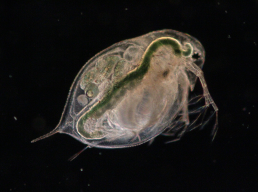
Are extinction time distributions scale free?
What is the shape of the probability distribution of population extinction times? We followed the dynamics of more than a thousand experimental populations of Daphnia pulicaria to the point of extinction. The actual set of extinction times in this experiment ranged from 1 day to 1,239 days (yup, that’s about three and a half years!). A new paper reports on statistical models to test the theoretical prediction that extinction times should be exponentially distributed. This prediction comes from such diverse models as generalized birth death processes, jump process, and diffusion processes. Interestingly, the exponential doesn’t fit very well and the observed distribution is much closer to a power law or some other distribution with a long tail. This fits nicely with the rather sparse collection of empirical results on occupancy times that are available, but not the standard theories of population dynamics.
- Drake, J.M. 2014. Tail probabilities of extinction time in a large number of experimental populations. Ecology. (In press). http://dx.doi.org/10.1890/13-1107.1





